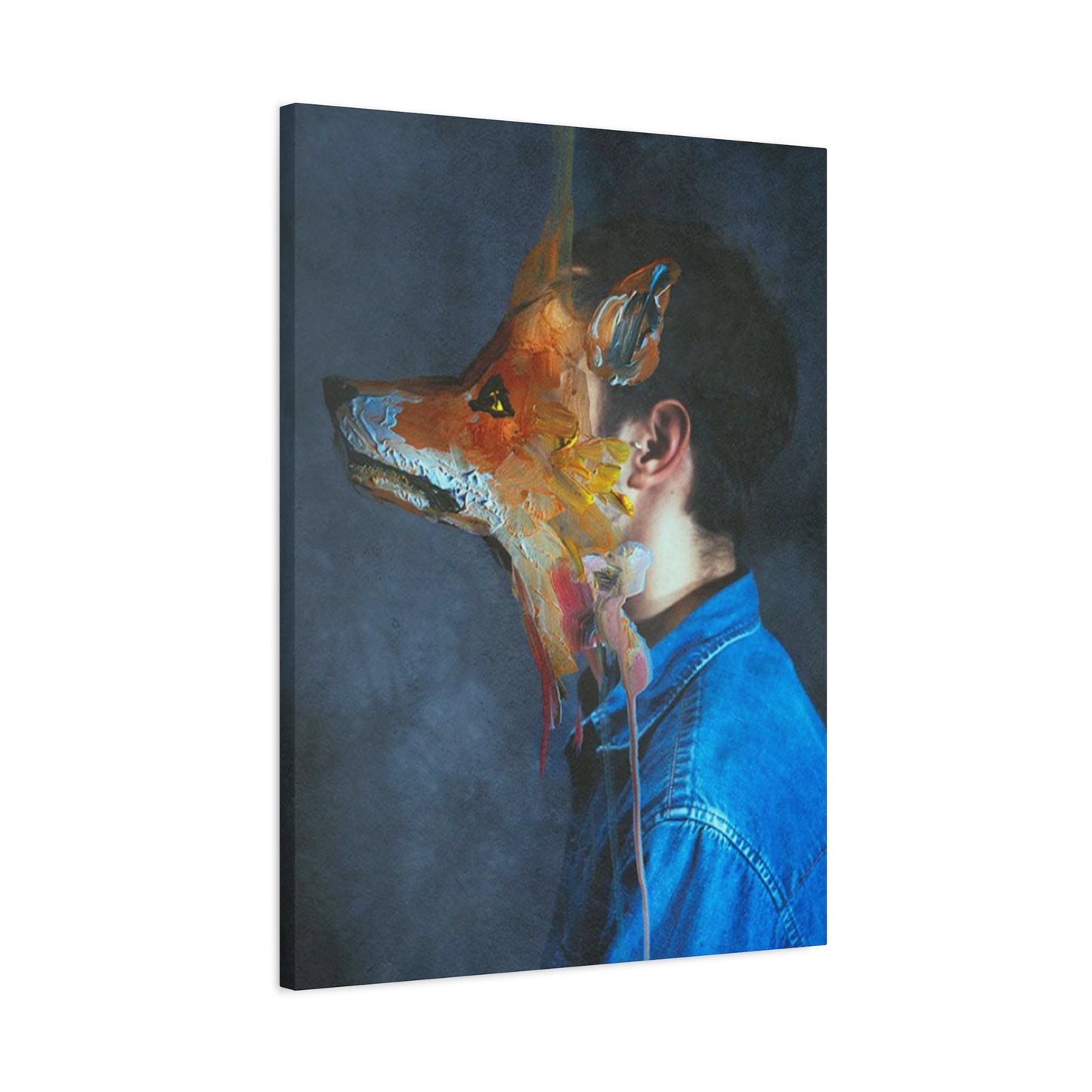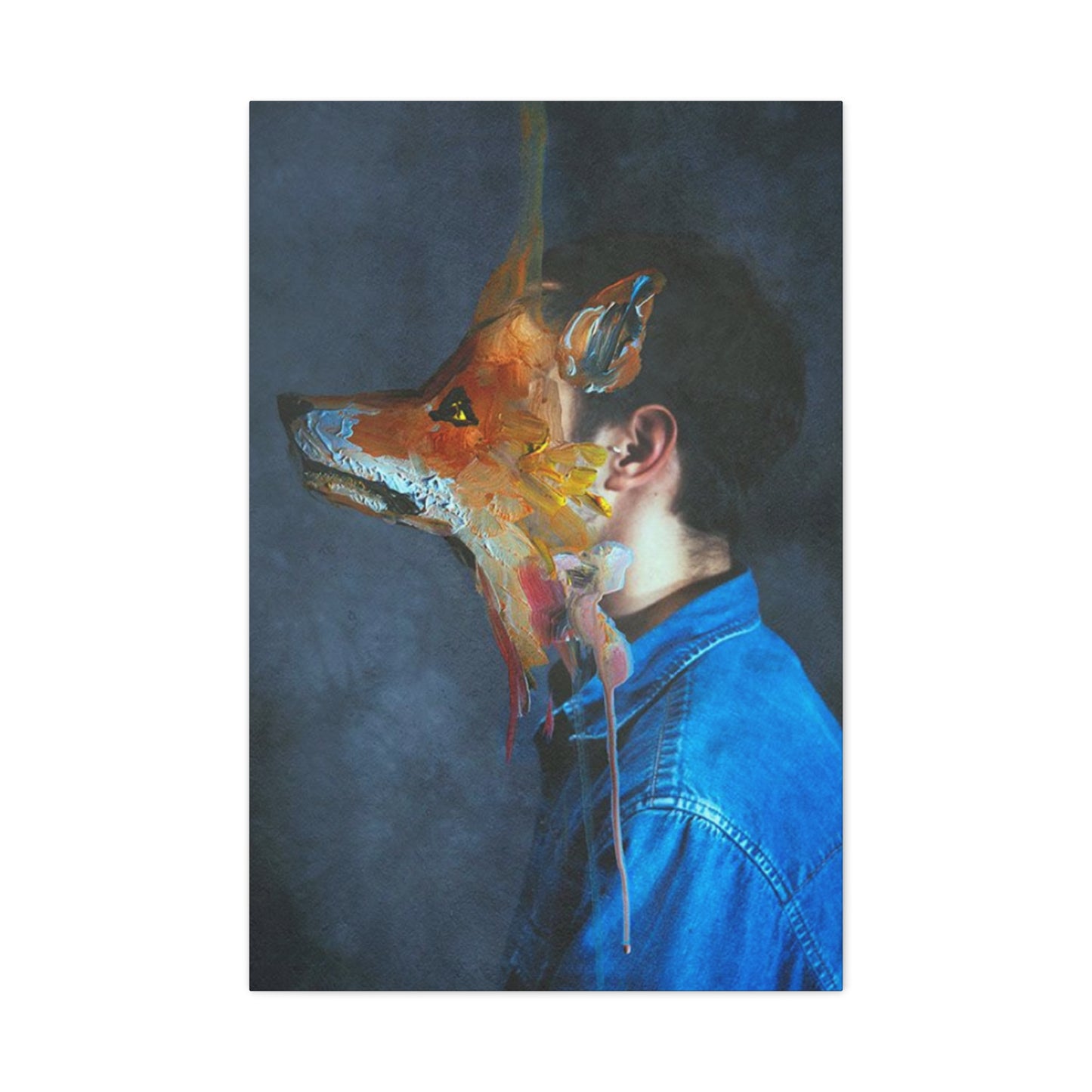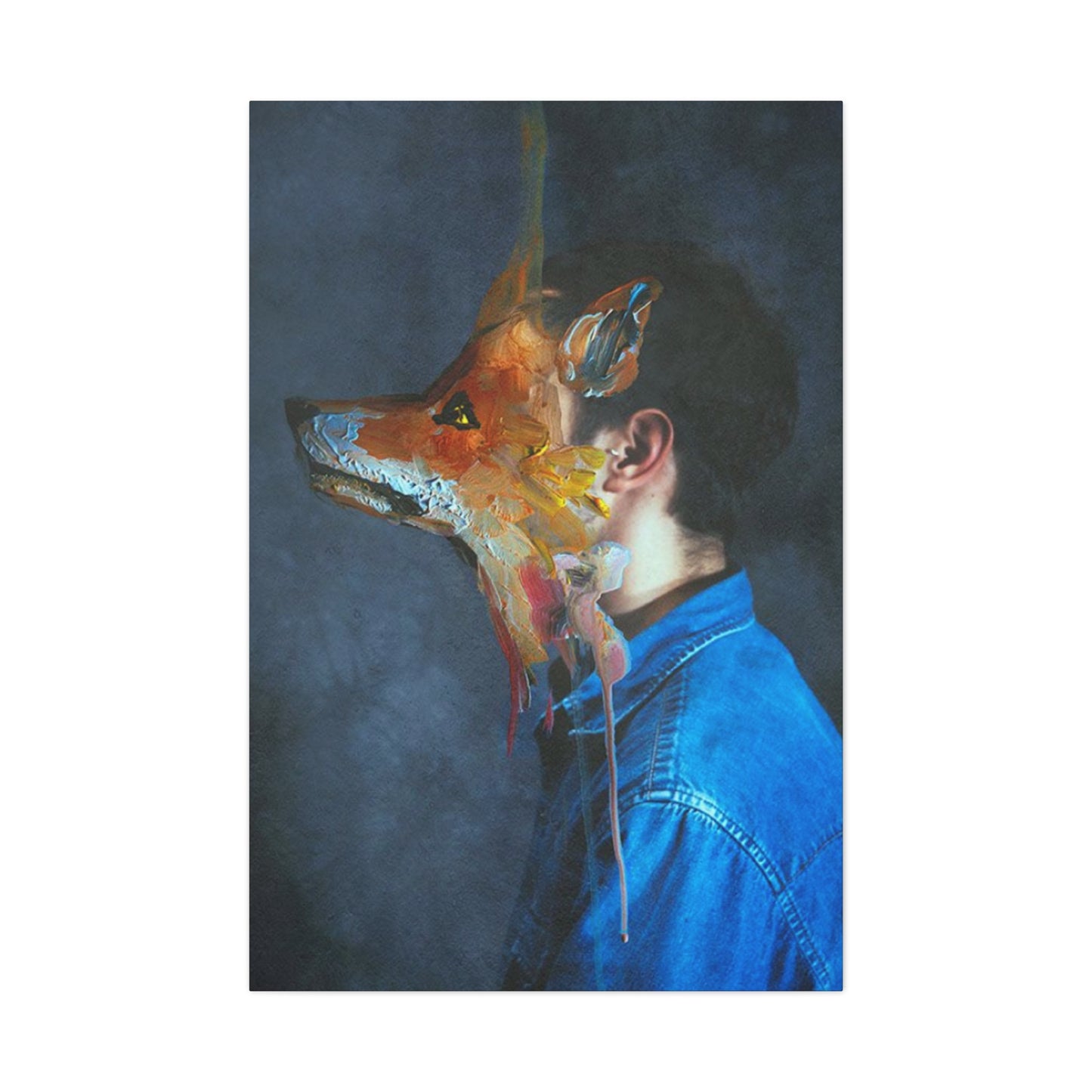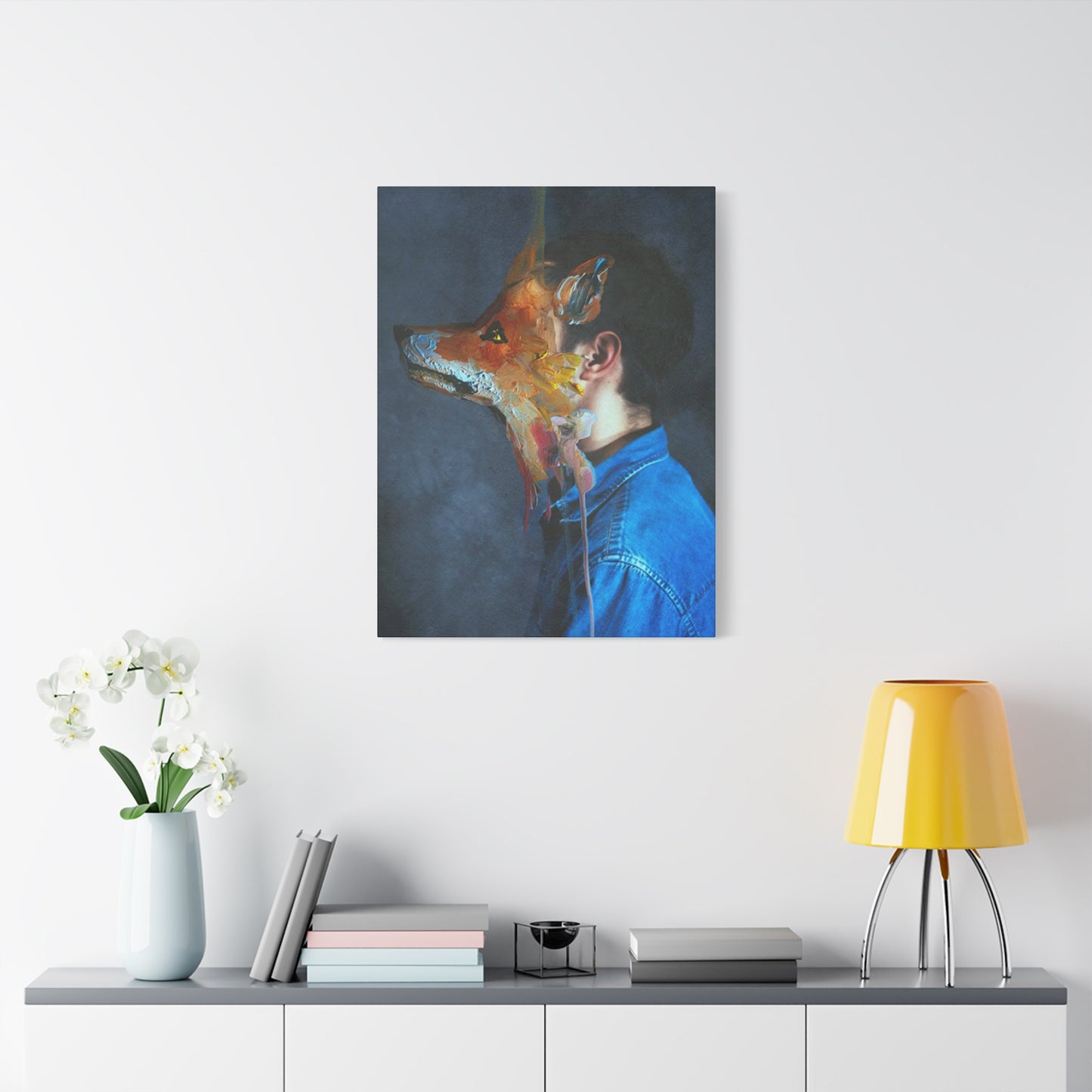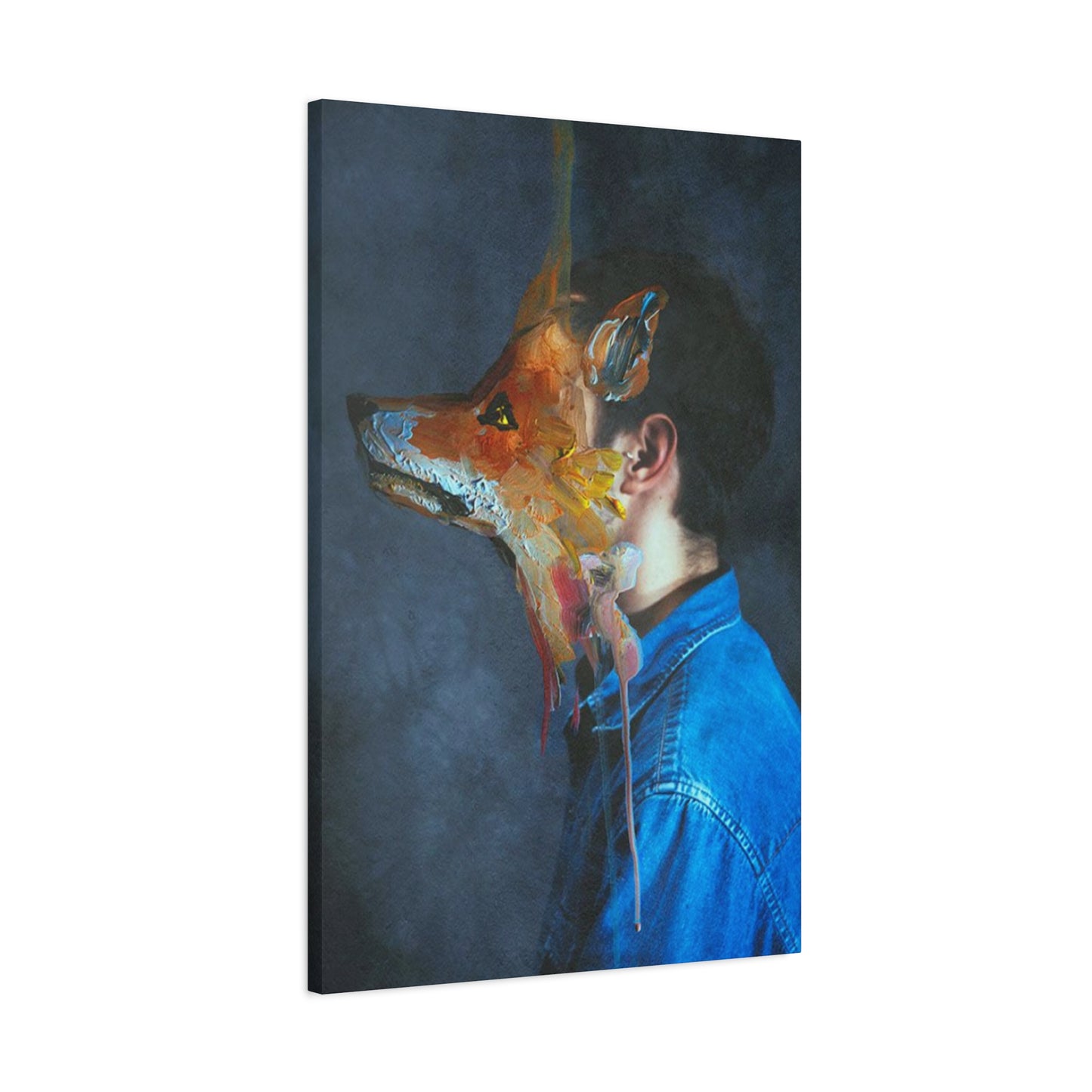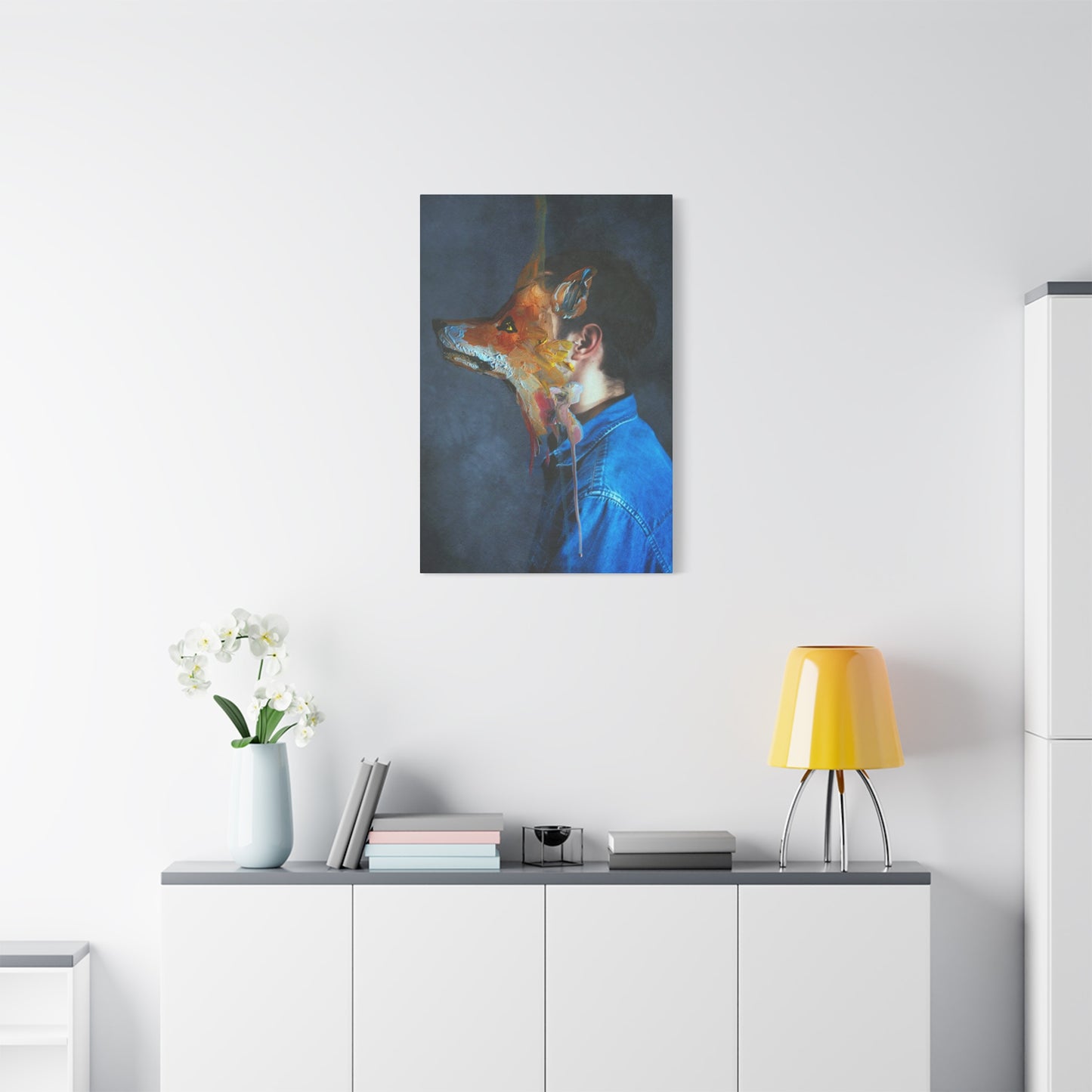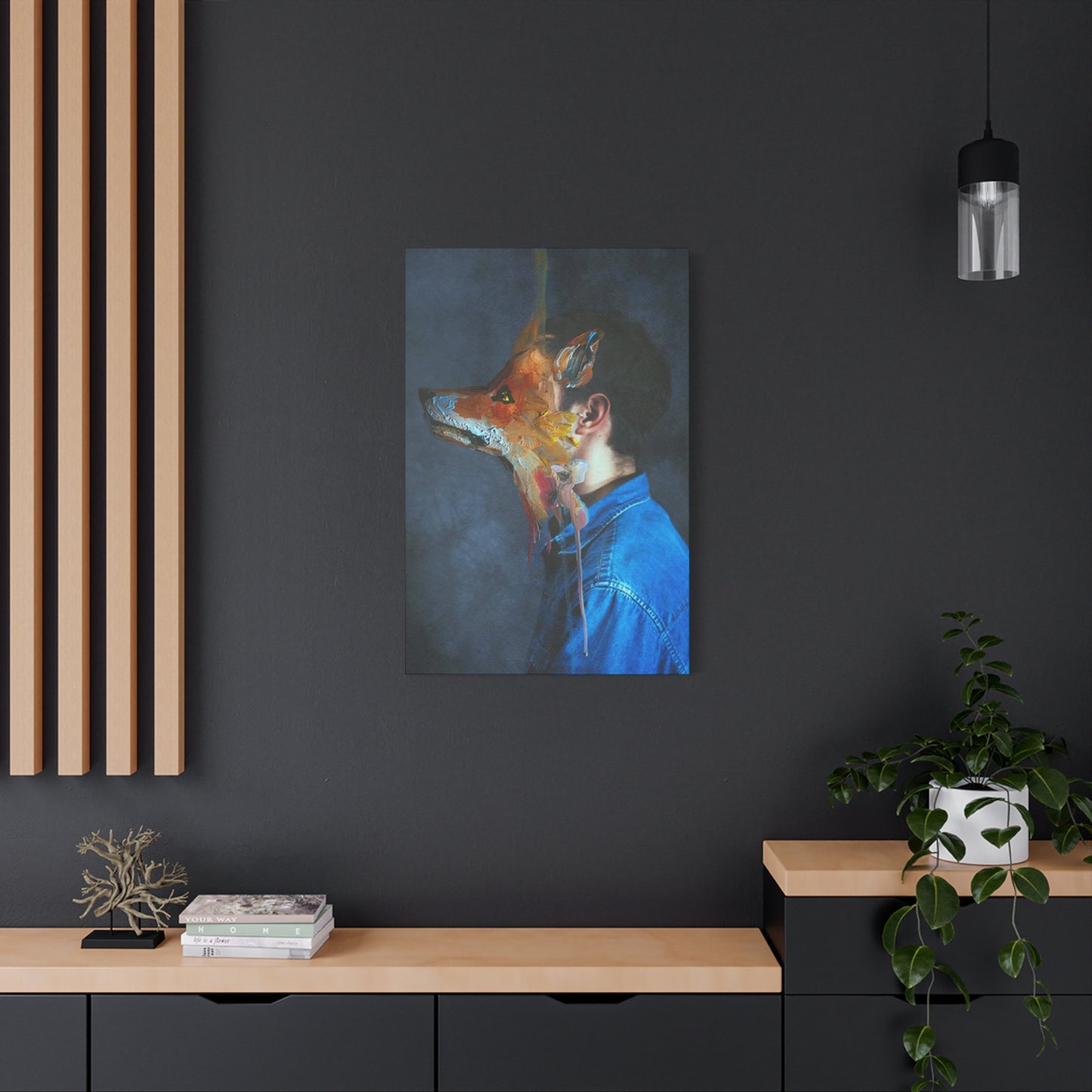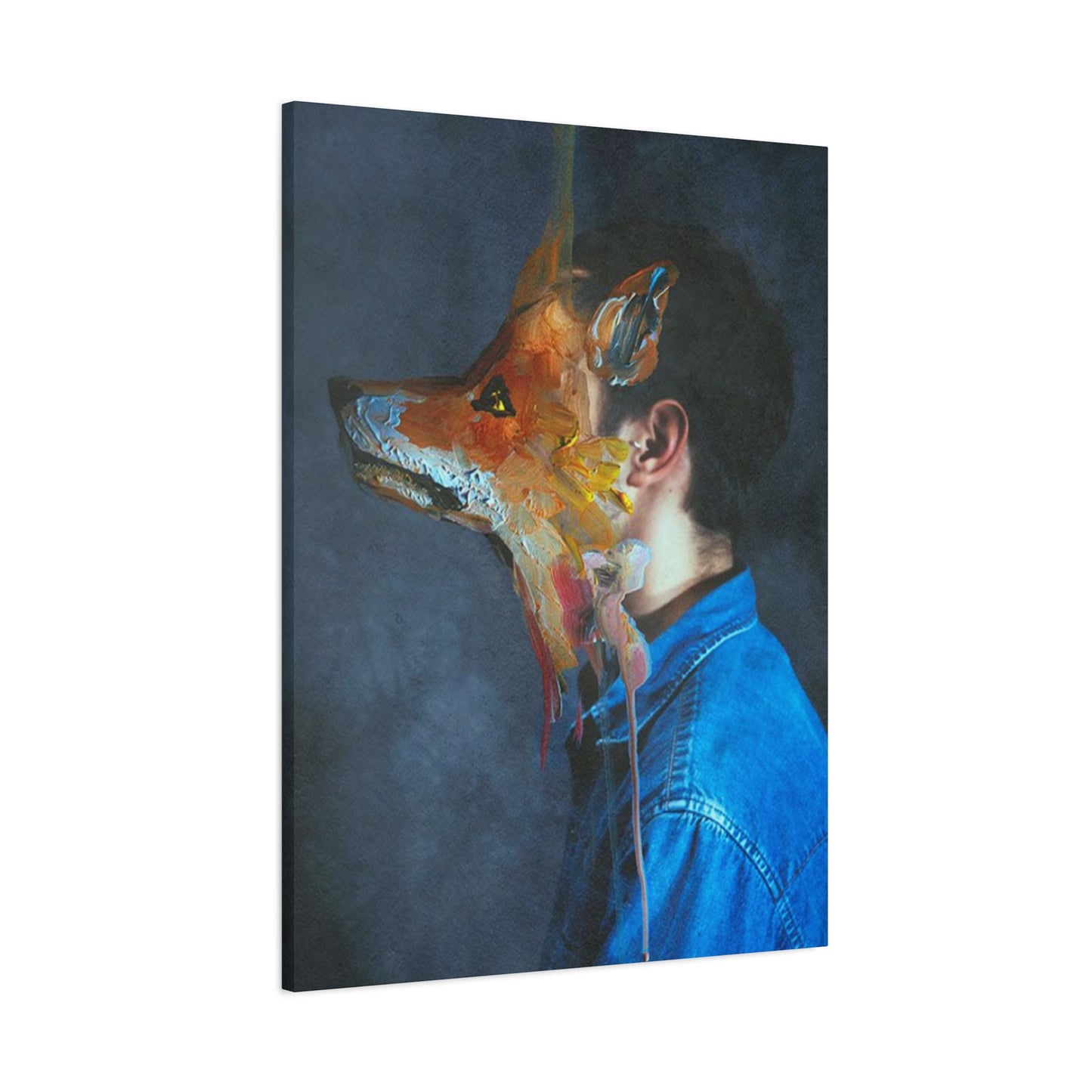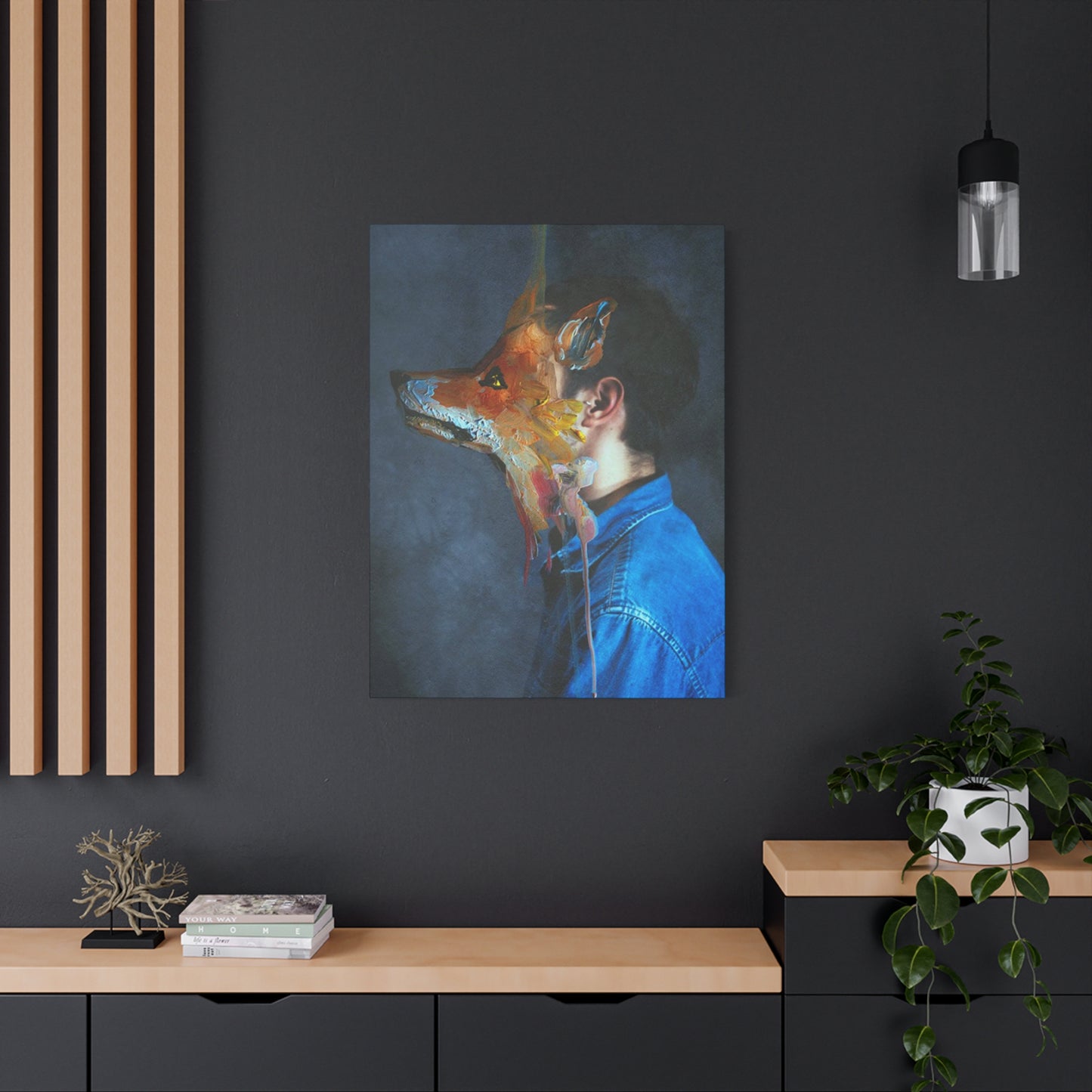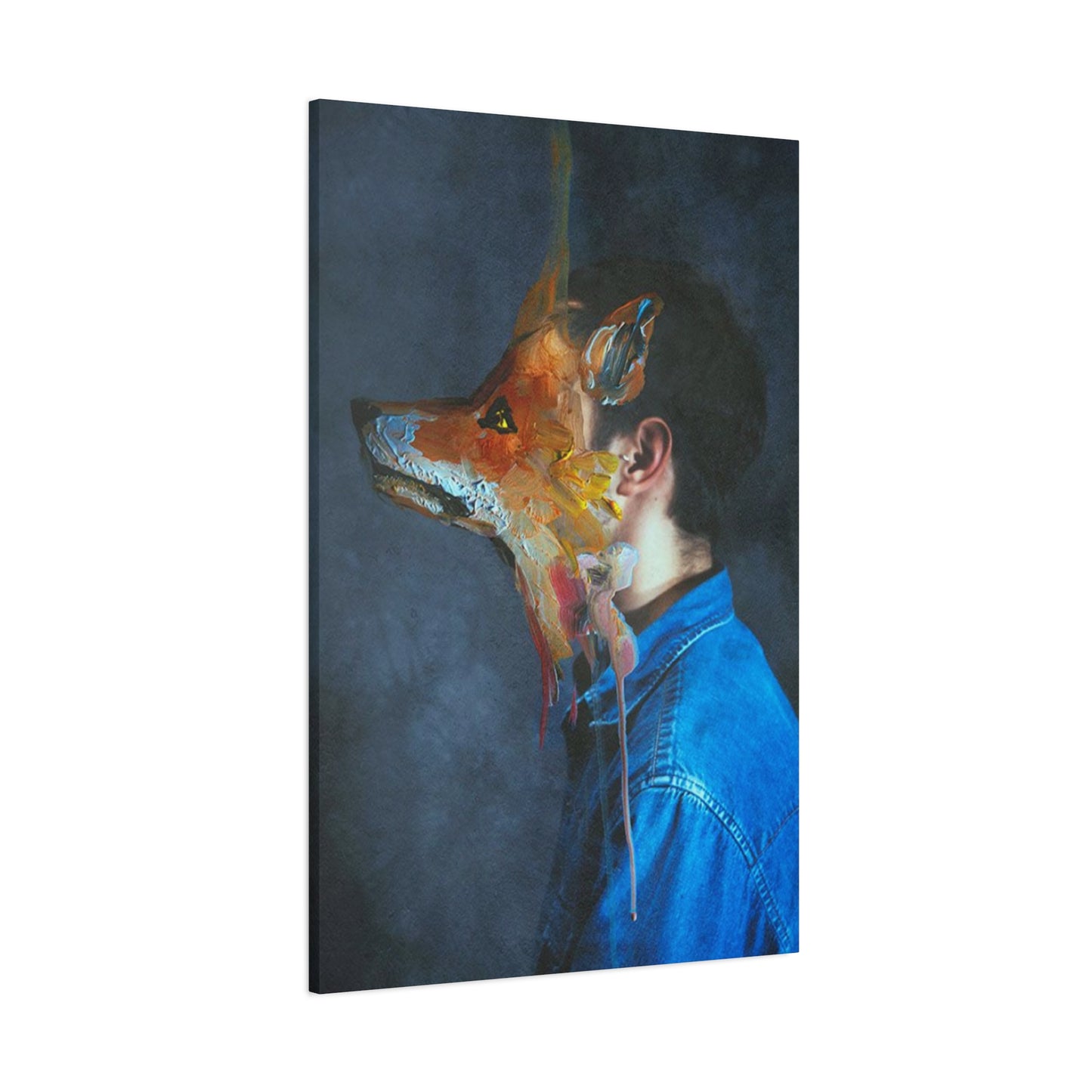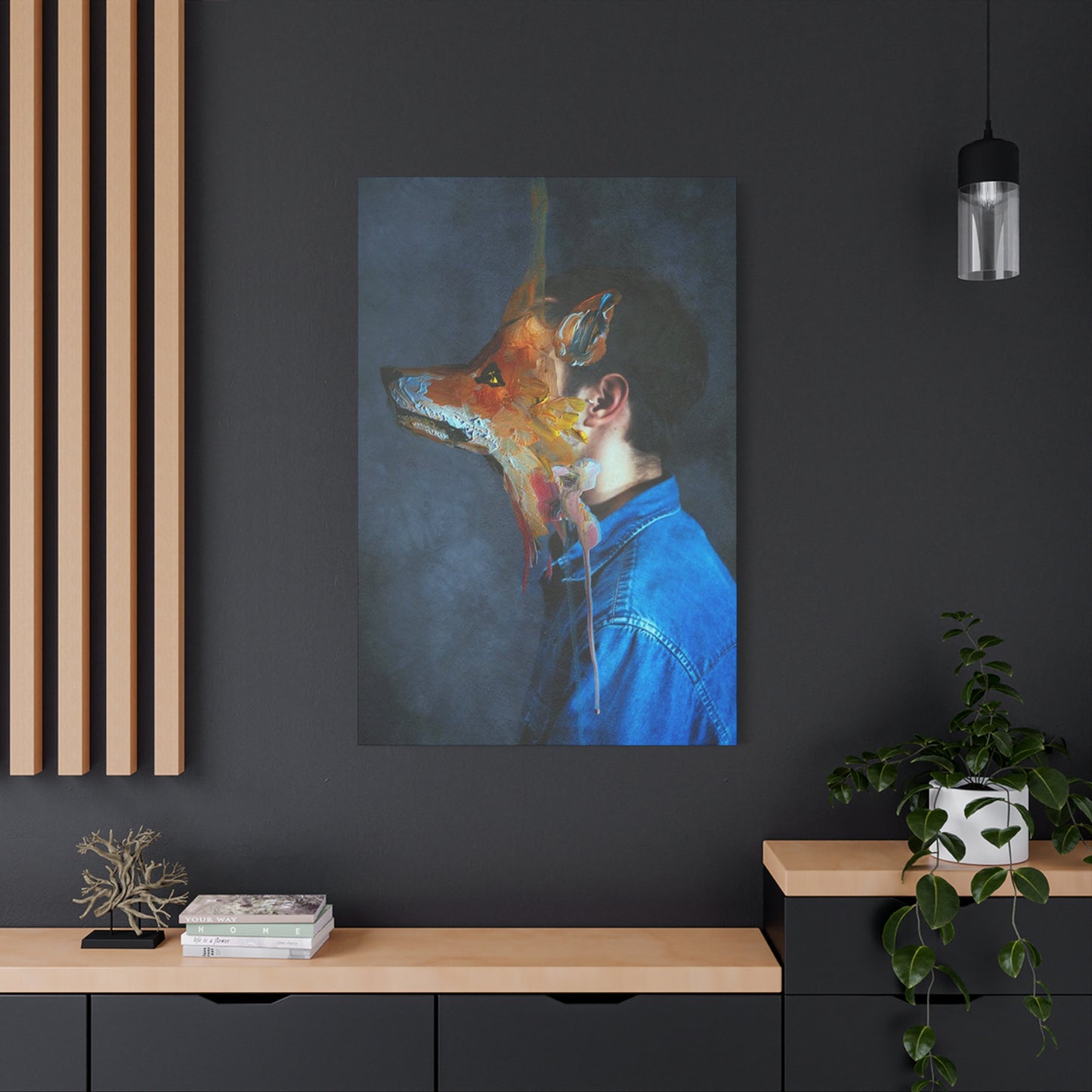Displaying Man and Dog Mixed Media Wall Art: Tips for Placement and Framing
The relationship between humans and their canine companions represents one of the most profound connections in the natural world. This extraordinary bond, spanning thousands of years of shared history, has inspired countless artists to capture its essence through various creative mediums. The visual representation of this partnership goes beyond simple portraiture, delving into the emotional depths of loyalty, trust, and unconditional love that define the human-canine relationship. Through layered techniques, textured compositions, and thoughtful artistic choices, creators continue to honor this timeless friendship, producing works that resonate with anyone who has experienced the transformative power of sharing their life with a faithful four-legged friend.
Loyal Companions in Visual Expression
The concept of depicting loyal companions through artistic mediums has evolved significantly throughout human history. From ancient cave paintings showing hunters alongside their canine partners to contemporary gallery pieces celebrating the everyday moments shared between people and their dogs, this theme remains eternally relevant. Artists who focus on this subject matter understand that they are capturing something far more significant than physical appearances. They are documenting an emotional landscape, a territory of shared experiences, mutual understanding, and profound connection that transcends species boundaries.
When examining works that celebrate loyal companionship, viewers immediately recognize the authenticity of the portrayed relationship. The subtle body language, the comfortable proximity, the synchronized movement all speak to years of shared experiences and mutual trust. These visual narratives tell stories of morning walks, quiet evenings, adventures explored together, and the countless small moments that build a lifetime of memories. The artistic challenge lies in translating these intangible qualities into visible forms, using composition, color, texture, and technique to communicate the depth of feeling that exists between human and canine.
The choice to represent these loyal companions through layered artistic approaches adds dimensional complexity to the subject matter. Multiple materials, techniques, and textures create visual richness that mirrors the multifaceted nature of the relationship itself. Just as the bond between person and dog develops through accumulated experiences, shared challenges, and growing understanding, the artwork builds through successive layers, each contributing to the overall impact and meaning of the finished piece.
Contemporary artists working in this genre often draw inspiration from their own experiences with canine companions, infusing their work with personal authenticity that viewers immediately recognize and respond to. This genuine understanding of the subject matter transforms technical skill into emotional communication, creating pieces that speak directly to the hearts of those who view them. The artwork becomes a mirror reflecting the viewer's own experiences, memories, and feelings about their relationships with their loyal companions.
The visual celebration of loyal companionship also serves an important cultural function, acknowledging and honoring the significant role dogs play in human society. These creatures serve not merely as pets but as family members, emotional support providers, working partners, and constant sources of unconditional acceptance. Artistic representations validate these relationships, elevating them to a level of cultural recognition that reflects their true importance in human lives.
Connection Without Language: The Silent Understanding
The relationship between humans and dogs demonstrates that profound communication requires no verbal language. This silent understanding forms the foundation of one of nature's most successful interspecies partnerships. Artists attempting to capture this wordless connection face the unique challenge of depicting communication that occurs through glances, gestures, subtle body language, and emotional intuition. The resulting artwork must convey volumes without relying on literal representation or obvious symbolism.
This non-verbal dialogue between species manifests in countless daily interactions. A tilt of the head communicating curiosity, a wagging tail expressing joy, a gentle lean signifying trust and affection all these subtle signals form a sophisticated language understood by both participants. When captured effectively in visual form, these moments of silent communication resonate powerfully with viewers who recognize the authenticity of the depicted interaction from their own experiences.
The artistic representation of this wordless bond often emphasizes proximity and positioning. The placement of figures within the composition, their orientation relative to each other, and the space or lack thereof between them all communicate relationship dynamics without requiring explanatory text or obvious visual cues. A person's hand resting naturally on their companion's head, parallel walking strides, synchronized gazes toward a common focal point these compositional choices speak eloquently about the nature of the connection being portrayed.
Color choices in these works often reflect emotional states and relational qualities. Warm tones may suggest comfort, security, and contentment, while the interplay of complementary colors can represent the complementary nature of the relationship itself. The visual harmony or deliberate contrast within the color palette becomes another language through which the artwork communicates its message about connection and understanding.
Texture plays a particularly important role in conveying the tactile dimension of the human-canine relationship. The physical experience of touching a dog's fur, feeling their warmth, and experiencing their physical presence forms an integral part of the bonding process. Artists working with multiple materials and layered techniques can suggest these tactile qualities, inviting viewers to engage not just visually but through an imaginative sensory experience that recalls their own physical interactions with their companions.
The absence of words in these relationships paradoxically enables deeper communication in some respects. Without the potential for misunderstanding through language, the connection operates on a more fundamental emotional level. Dogs respond to tone, energy, and genuine feeling rather than specific vocabulary, creating relationships based on authentic emotional exchange rather than linguistic interpretation. Artists capturing these moments tap into this primordial form of connection, creating works that communicate directly with viewers' emotions rather than their analytical minds.
Combining Materials and Techniques for Deeper Meaning
The artistic approach of combining multiple materials and techniques offers unique opportunities for expressing the complexity of the human-canine relationship. This methodological diversity mirrors the multifaceted nature of the bond itself, allowing artists to explore different dimensions of the connection through varied creative tools. Each material brings its own qualities, associations, and expressive potential, while their combination creates something greater than the sum of individual parts.
The layering process fundamental to this artistic approach parallels the way relationships develop over time. Initial foundational layers establish the basic composition and structure, much as early interactions between person and dog establish the framework for future connection. Subsequent layers add detail, nuance, and emotional depth, just as shared experiences and growing trust deepen the relational bond. The visible history of the creative process becomes a metaphor for relational development, with each layer contributing to the final meaningful whole.
Material selection in these works often carries symbolic significance. Traditional painting media might represent classical artistic values and timeless themes, while contemporary materials could suggest modern life contexts and current experiences. Incorporating found objects, photographs, or text fragments can introduce specific narrative elements or personal history into the composition. The juxtaposition of different materials creates visual interest while also suggesting the diverse elements that comprise any significant relationship.
Textural variety achieved through multiple techniques engages viewers on multiple sensory levels. Smooth passages might represent peaceful moments, while rough, heavily worked areas could suggest challenges overcome or the weathering effects of time and experience. This textural diversity creates visual rhythm and encourages sustained viewing, rewarding those who take time to explore the surface and discover the various elements incorporated into the composition.
The technical versatility required for working across multiple materials demands considerable artistic skill and knowledge. Understanding how different media interact, which materials can be successfully combined, and how to achieve desired effects through unconventional techniques requires extensive experimentation and mastery. This technical sophistication serves the expressive goal, ensuring that material choices and applications enhance rather than distract from the emotional content of the work.
Transparency and opacity variations possible through layered approaches create visual depth that draws viewers into the picture plane. Partially visible underlying layers suggest memory, history, and the accumulated experiences that form the foundation of current reality. This temporal dimension adds psychological complexity to the work, acknowledging that present relationships exist within the context of shared past experiences and the anticipation of future moments together.
Celebrating an Enduring Partnership Through Time
The friendship between humans and canines represents one of the oldest interspecies partnerships in recorded history. Archaeological evidence suggests this relationship began between fifteen thousand and forty thousand years ago, evolving from pragmatic cooperation into the deep emotional bonds characterizing modern relationships. Artists depicting this ancient partnership participate in a creative tradition extending back to humanity's earliest visual expressions, connecting contemporary work to a vast historical continuum of celebrating this special connection.
Historical representations of the human-canine relationship reveal changing cultural attitudes and varying roles dogs have played across different societies and time periods. Ancient Egyptian art portrayed dogs as hunting companions and valued household members. Medieval European illustrations showed dogs accompanying nobility and protecting homes. Asian artistic traditions depicted dogs as spiritual guardians and symbols of loyalty. Each cultural context contributed unique perspectives to the ongoing artistic exploration of this relationship.
The timeless quality of this friendship derives partly from its fundamental nature, which transcends specific cultural contexts or historical periods. Whether in ancient civilizations or modern urban environments, the basic emotional dynamics of the relationship remain remarkably consistent. Trust, loyalty, companionship, mutual affection these qualities characterize the bond across all time periods and cultural settings. Artists working in contemporary contexts tap into this timeless dimension, creating works that feel both current and eternal.
Evolutionary biology helps explain why this partnership has endured so successfully across millennia. Dogs evolved alongside humans, developing enhanced abilities to read human facial expressions, respond to gestural communication, and attune themselves to human emotional states. This biological adaptation created creatures uniquely suited for close companionship with people, capable of forming genuine interspecies friendships rather than merely tolerating proximity. The depth of connection possible between humans and dogs has biological foundations that contribute to its universal and timeless character.
Philosophical considerations of the human-canine relationship explore questions about consciousness, emotion, and the nature of friendship itself. Can beings of different species genuinely be friends, or does friendship require shared species membership? Do dogs experience emotions comparable to human feelings, or are their internal experiences fundamentally different? These questions, debated by philosophers and scientists, add intellectual depth to artistic explorations of the relationship, inviting viewers to contemplate the nature of connection and consciousness while appreciating the aesthetic qualities of the work.
Literary traditions complementing visual artistic approaches have celebrated this enduring partnership through countless stories, poems, and narratives. From classical mythology featuring faithful canine companions to contemporary novels exploring the human-canine bond, written works parallel visual traditions in honoring this relationship. The interplay between literary and visual traditions enriches both, with each medium offering unique strengths for expressing different aspects of the connection.
Honoring Steadfast Devotion Through Creative Practice
The unwavering loyalty characteristic of canine companions has inspired humans throughout history and continues to provide rich subject matter for artistic exploration. This devotion, offered freely without conditions or expectations, represents an ideal form of relationship that humans aspire to in their connections with others. Artists honoring this quality through their creative practice engage with profound themes of commitment, faithfulness, and unconditional acceptance.
Depicting loyalty visually requires capturing both action and attitude. The physical stance of a dog alert to potential threats, the watchful gaze monitoring their human companion, the eager responsiveness to their person's movements all these behavioral manifestations of loyalty can be portrayed through careful attention to posture, expression, and composition. Beyond physical representation, however, artists must somehow convey the emotional and psychological dimensions of devotion, the internal commitment that motivates the external behaviors.
The concept of honoring through artistic practice implies a degree of reverence and respect for the subject matter. These works go beyond simple representation to become acts of recognition and celebration. They acknowledge the profound gift that loyal companionship represents and offer visual testimony to the significance of these relationships in human lives. This reverential quality distinguishes commemorative work from purely aesthetic exercises, infusing the art with additional layers of meaning and purpose.
Personal stories of remarkable loyalty often inspire specific artistic works. Accounts of dogs traveling impossible distances to reunite with their families, remaining beside injured companions until help arrives, or providing unwavering support through human illness and difficulty demonstrate the extraordinary capacity for devotion these creatures possess. Artists transforming these narratives into visual form create powerful reminders of the noble qualities embodied by canine companions.
The reciprocal nature of the human-canine relationship deserves acknowledgment in balanced artistic portrayals. While celebrating canine loyalty, the best works also suggest human devotion to their companions. Responsible care, emotional investment, and genuine commitment from the human partner create the conditions allowing dogs to express their loyal nature fully. Artwork capturing this mutual devotion presents a more complete and authentic representation of the relationship than one-sided portrayals focusing exclusively on canine qualities.
Cultural variations in how loyalty is understood and valued affect artistic representations across different traditions. Some cultures emphasize duty and obligation as primary virtues, while others prioritize emotional bonds and affection. These varying cultural frameworks influence how artists approach depicting loyalty and what visual elements they emphasize to communicate devotion effectively within their cultural context. Despite these variations, the fundamental appreciation for steadfast companionship remains remarkably universal.
Faithful Friendship Preserved on Surfaces
The translation of living relationships into permanent artistic formats involves inherent challenges and opportunities. Capturing the dynamic, constantly evolving nature of friendship within a static format requires artistic decisions about what moments to preserve, which qualities to emphasize, and how to suggest ongoing relationship within frozen time. The surface that receives the artistic application becomes more than merely a support structure; it transforms into sacred space where friendship is honored, remembered, and made visible to others.
Selection of the specific surface for artistic creation carries practical and symbolic significance. Traditional stretched fabric provides classic support with particular handling characteristics. Wooden panels offer rigid stability and historical associations with master works. Contemporary alternatives introduce new possibilities and different aesthetic qualities. The surface choice affects how materials interact, what techniques become possible, and the overall character of the finished work.
The act of bringing faithful friendship onto surfaces through artistic practice constitutes a form of preservation and celebration. Photographs capture specific moments, but artistic interpretation adds layers of meaning through creative choices about composition, color, emphasis, and technique. The artist functions as translator, converting lived experience and emotional reality into visual language that communicates the essence of the relationship to viewers who may never meet the specific individuals portrayed.
Surface preparation becomes a ritual beginning the creative process. Applying base layers, establishing the foundation, preparing the ground for subsequent work these initial steps set the stage for everything that follows. The care taken in preparation reflects respect for the subject matter and commitment to creating something worthy of the friendship being honored. Proper preparation ensures longevity, allowing the work to endure across time much as the friendship itself endures.
Working on surfaces over extended periods allows relationships between artist and subject matter to deepen. Unlike quick sketches or photographs capturing single instants, sustained artistic engagement requires extended contemplation of the subject. This prolonged focus often yields insights and understanding that emerge only through patient, repeated observation and consideration. The resulting work carries the depth of this extended engagement, communicating layers of meaning that quick executions cannot achieve.
The finished surface becomes a focal point for memory and emotion. Displayed in living spaces, these works serve as constant reminders of the importance of the relationship and the qualities it embodies. They create opportunities for sharing stories with visitors, for private reflection during quiet moments, and for maintaining connection even when physical separation occurs. The surface that began as blank potential transforms into meaningful presence within daily life.
Celebrating Cherished Relationships Through Visual Storytelling
Every friendship between person and dog comprises countless individual moments, shared experiences, and developed patterns of interaction. Visual storytelling allows artists to distill this accumulation into single compositions that somehow suggest the larger narrative. These works function as visual poems, using concentrated imagery to evoke extensive emotional territories and complex relational dynamics.
The narrative dimension of artwork celebrating these relationships can manifest through various approaches. Some pieces capture specific moments that represent larger patterns or hold particular significance. A walk through autumn leaves might represent years of daily exercise together. A quiet evening scene could embody countless peaceful hours of companionship. The specific becomes universal, the individual moment suggests the larger story.
Sequential elements within single compositions can suggest narrative progression and the passage of time. Variations in treatment across the picture plane, figures shown at different scales, or symbolic elements indicating life stages allow single works to encompass broader timeframes than their static format might suggest. These techniques enable artists to honor the duration and development of relationships within singular artistic statements.
Emotional storytelling through visual means requires understanding which details carry narrative weight and psychological significance. The wear pattern on a favorite toy, the comfortable arrangement of shared resting spaces, the automatic coordination of movement between longtime companions these telling details communicate volumes about relationship history and quality. Artists skilled in visual narrative identify and emphasize these significant elements, guiding viewer attention toward the most meaningful aspects of the portrayed relationship.
Viewer participation completes the storytelling process. Artwork provides visual information and emotional cues, but viewers bring their own experiences, memories, and feelings to the encounter. This collaboration between artwork and viewer creates meaning that exists neither in the piece alone nor in the viewer's mind separately, but emerges from their interaction. The most successful works create space for this participatory meaning-making, offering enough specificity to communicate clearly while maintaining sufficient openness for personal interpretation.
Cultural narratives surrounding the human-canine relationship provide broader context for individual stories. Collective myths, shared cultural values, and common experiences form a backdrop against which specific relationships play out. Artists can engage with these larger narratives, either reinforcing cultural norms or offering alternative perspectives that challenge conventional understandings. This dialogue between individual and cultural stories enriches both, adding dimensions of meaning to artistic works.
Heartfelt Partnership Expressed Through Layered Creation
The emotional dimension of the human-canine relationship provides perhaps the richest territory for artistic exploration. These partnerships engage the full spectrum of human feeling, from joy and contentment to grief and loss, from playful humor to profound connection. Artists working with layered creative approaches possess unique tools for expressing this emotional complexity, building affective depth through accumulated material and technical choices.
Emotional authenticity forms the foundation of impactful work in this genre. Viewers immediately recognize whether artwork stems from genuine feeling or merely represents technical exercise. The difference between heartfelt expression and calculated manipulation becomes apparent in subtle qualities that resist precise definition but powerfully affect viewer response. Artists creating from authentic emotional engagement produce work that resonates at depths beyond conscious analysis.
The vulnerability required for emotional artistic expression presents challenges for many creators. Exposing genuine feelings through public artwork requires courage and willingness to be seen. Yet this vulnerability paradoxically creates connection with viewers, who respond to authentic emotional expression with their own openness. The artistic act becomes a form of emotional gift-giving, with the creator offering their genuine feelings as an invitation for viewers to access their own emotional landscapes.
Layered construction methods naturally support emotional complexity. Contradictory feelings can coexist within relationships, love and frustration, joy and sadness, security and worry. These emotional multiplicities find natural expression through layered approaches where different passages of the work carry different affective qualities. The overall composition holds these varying emotional notes together, creating rich psychological portraits that honor the full complexity of meaningful relationships.
Color psychology plays significant roles in emotional communication through visual means. Warm hues generally evoke feelings of comfort and affection, while cooler tones might suggest calm or melancholy. Bold, saturated colors communicate intensity of feeling, whereas muted palettes can convey subtle or complex emotions. Artists skilled in color manipulation orchestrate these effects deliberately, guiding viewer emotional responses through chromatic choices.
The physical process of creating layered work mirrors emotional processing in some respects. Building up surfaces, working through successive stages, allowing earlier layers to inform later decisions these aspects of artistic practice parallel how people work through feelings, integrate experiences, and develop emotional understanding over time. The finished artwork carries traces of this process, visible evidence of the journey from initial impulse to resolved statement.
Human and Canine Unity in Textured Compositions
The concept of unity within diversity provides fruitful ground for artistic exploration of the human-canine relationship. Two beings of different species, with different needs, perceptions, and natural behaviors, nonetheless form cohesive partnerships characterized by harmony and mutual understanding. Visual representations of this unity challenge artists to portray both the distinctiveness of each participant and their integration into a functional whole.
Compositional unity in artwork brings diverse elements into harmonious relationships. Repeated shapes, colors, or textural qualities create visual connections between different parts of the composition. Balanced arrangements distribute visual weight evenly across the picture plane. Careful attention to edge relationships and transitional areas ensures that separate elements feel connected rather than isolated. These technical considerations serve the conceptual goal of representing unity within the portrayed relationship.
Textural variety adds visual interest while also suggesting the different qualities each partner brings to the relationship. Smooth, flowing passages might represent certain characteristics, while rough, energetic textures suggest different attributes. The interplay of these varying textural qualities creates dynamic visual experience that engages viewers and encourages sustained attention. Texture also provides tactile associations, connecting visual experience to physical sensation and embodied understanding.
The symbolic potential of unity imagery extends beyond literal representation of specific individuals. These works can function as statements about broader themes including interspecies cooperation, the transcendence of difference through connection, and the possibility of harmony across boundaries. The specific relationship portrayed becomes exemplary, demonstrating principles applicable to other contexts and relationships.
Technical challenges of creating convincing textured surfaces require material knowledge and experimentation. Different substances create different textural effects. Application techniques affect surface qualities. The sequencing of layers influences final appearance. Artists developing proficiency with textured approaches expand their expressive vocabulary, gaining tools for articulating ideas and emotions that smooth surfaces cannot adequately communicate.
The interplay between representational accuracy and expressive distortion creates productive tension in these works. Pure representation aims for visual fidelity, accurately depicting physical appearance. Expressive approaches prioritize emotional communication over literal accuracy, exaggerating or minimizing features to enhance affective impact. The most successful works often balance these impulses, maintaining sufficient representational clarity for recognition while employing expressive techniques to amplify emotional content.
Creating Meaningful Wall Presence with Depth
Artwork celebrating the human-canine relationship assumes particular significance when integrated into daily living environments. Unlike pieces viewed occasionally in galleries or museums, works displayed in homes become part of everyday visual experience, providing constant reminders of values, relationships, and what matters most to inhabitants. The presence these pieces establish within living spaces contributes to the overall atmosphere and emotional tone of the environment.
Visual depth in artwork creates engagement that rewards repeated viewing. Unlike flat, simple compositions that reveal everything in single glances, dimensional works invite exploration and continued discovery. Viewers find new details, notice subtleties previously overlooked, and experience varying responses depending on lighting conditions, viewing distances, and their own changing emotional states. This sustainability of interest makes artwork particularly suitable for long-term display in frequently occupied spaces.
The concept of meaningful presence distinguishes impactful artwork from mere decoration. Decorative objects serve important functions, but meaningful pieces engage viewers on deeper levels, prompting reflection, stirring emotion, or affirming values. Work celebrating the human-canine relationship naturally carries this meaningful dimension for those who have experienced such partnerships, functioning as visual affirmations of what these relationships represent in their lives.
Scale considerations affect the presence and impact of displayed work. Larger pieces command attention and make bold statements, establishing themselves as focal points within rooms. Smaller, more intimate works invite closer inspection and create different viewing experiences. The relationship between artwork size and display environment significantly influences how pieces function within spaces and what kind of presence they establish.
Lighting dramatically affects how textured, layered works are perceived. Directional lighting emphasizes surface variations, creating dramatic plays of highlight and shadow that reveal depth and dimension. Diffuse lighting produces more even illumination that allows color relationships to dominate visual experience. The changing natural light throughout days creates varying appearances, ensuring that artwork continues to reveal different aspects of itself over time.
The personal significance of artwork featuring beloved companions cannot be overstated for those living with these pieces. Each viewing occasion might trigger memories, evoke emotions, or inspire gratitude for the relationship celebrated in the work. During difficult times, these pieces provide comfort. During joyful moments, they amplify happiness. The ongoing relationship between inhabitants and displayed artwork enriches daily life in ways both subtle and profound.
Movement Through Existence Rendered in Stroke and Surface
The journey of life shared between human and canine companions encompasses everyday routines, special adventures, seasonal changes, and gradual developmental progressions. This movement through time and experience provides narrative structure for artistic exploration. Single compositions can suggest this temporal dimension through various techniques, creating works that feel like visual excerpts from longer stories rather than isolated frozen moments.
The physical movement characteristic of active relationships with energetic companions translates into dynamic compositions and energetic mark-making. Diagonal orientations suggest motion and direction. Gestural marks capture the energy of movement frozen mid-action. Strategic blurring or reduced detail in certain areas implies motion beyond what static images can literally represent. These techniques help overcome the inherent stillness of visual art, creating sense of vitality and ongoing action.
Life stages from puppyhood through senior years offer opportunities for exploring themes of growth, change, and the passage of time. Some artists create series documenting relationships across years, with each piece representing different life phases. Others incorporate multiple temporal references within single compositions, suggesting the full span of relationships within unified works. Both approaches acknowledge that these partnerships develop and change while maintaining essential continuity.
Seasonal cycles and environmental changes provide natural frameworks for considering temporal progression. The same walking path looks and feels different across seasons, just as relationships shift in quality while maintaining fundamental character. Artists can use seasonal references to add temporal dimension, suggesting that depicted moments exist within larger cycles of change and return.
The concept of journey carries both literal and metaphorical significance in these works. Literal journeys include daily walks, car rides, hiking adventures, and travels undertaken together. Metaphorical journeys encompass emotional development, mutual growth, and the shared experience of moving through life together. Visual representations of journey combine these literal and metaphorical dimensions, creating works that operate on multiple levels simultaneously.
Pathways, trails, and roads frequently appear as compositional elements in these works, functioning as obvious journey symbols while also providing strong linear elements that organize compositions and guide viewer eye movement. The decision whether to show clear destinations or open-ended paths affects whether works feel conclusive or ongoing, suggesting either journey completion or continuing adventure.
Humanity's Greatest Companion Through Accumulated Experience
Dogs have earned their reputation as humanity's greatest companion through consistent demonstration of qualities that humans value most in relationships. Loyalty, unconditional affection, enthusiasm for shared activities, comfort during difficulties, and joyful celebration of good moments all these attributes make dogs extraordinary partners. Artistic works celebrating this status honor not just individual dogs but acknowledge the broader phenomenon of what these creatures bring to human lives.
The title of greatest companion carries significant weight, suggesting that among all possible relationship types and partner species, the human-canine bond holds special status. This claim finds support in the unique history of the relationship, the biological adaptations dogs developed for human partnership, and the countless individual stories of remarkable companionship that collectively demonstrate the extraordinary nature of these bonds.
Cultural recognition of dogs' special status appears across diverse societies and historical periods. Ancient burial sites showing humans interred with canine companions, legal systems developing specific protections and rights for dogs, and modern social arrangements treating dogs as family members rather than property all demonstrate widespread acknowledgment of their unique position in human communities.
The question of what constitutes greatest companionship invites reflection on relationship qualities and what humans most value in their connections with others. Presence rather than absence, acceptance rather than judgment, emotional honesty rather than strategic presentation these qualities characterize canine companionship and explain much of its appeal. Dogs offer simplified, purer forms of relationship than most human connections provide, free from complex social dynamics and hidden agendas.
Individual variations among dogs create diverse relationship experiences despite shared species characteristics. Personality differences, breed traits, and individual histories shape each dog's approach to companionship. Some dogs are boisterous and playful, others calm and gentle. Some thrive on adventure, others prefer comfortable routine. This variety ensures that humans with different needs, preferences, and lifestyles can find compatible companions.
The transformative impact of canine companionship on human wellbeing receives increasing research attention. Studies document physical health benefits including lower blood pressure and increased exercise. Psychological benefits include reduced stress, decreased loneliness, and improved mood. Social benefits emerge as dogs facilitate human interactions and connections. This growing evidence base scientifically validates what experience has always suggested about the profound positive impact of these relationships.
Canine-Human Partnership Presented in Constructed Reality
The artistic process of creating constructed reality through layered approaches offers unique opportunities for expressing ideas about relationship dynamics and partnership qualities. Unlike purely representational approaches attempting to mirror observable reality, constructed approaches allow artists to build visual worlds governed by expressive and symbolic logic rather than physical actuality. These created realities can communicate truths about relationships that purely realistic representation cannot adequately express.
The partnership between dogs and humans functions as genuine collaboration despite species differences. Each partner contributes what they can offer, and both benefit from the arrangement. Dogs provide companionship, protection, assistance with tasks, and emotional support. Humans provide care, resources, structure, and affection. This reciprocal arrangement characterizes the relationship as partnership rather than simple ownership, acknowledging the agency and contribution of both participants.
Visual constructions representing partnership must balance individual identity with unified connection. Each figure requires sufficient characterization to establish presence and personality. Simultaneously, compositional integration must demonstrate their connection and collaborative function. This balance challenges artists to create works where neither figure dominates, where both maintain integrity while clearly functioning as parts of a greater whole.
The constructed nature of artistic reality allows symbolic and metaphorical elements to coexist with representational content. Abstract passages might represent emotional states or psychological dimensions of relationships. Symbolic objects or environments can suggest meanings beyond literal interpretation. Text fragments might introduce narrative or conceptual elements. This mixing of representational and non-representational approaches creates rich, complex works operating on multiple levels.
Spatial construction in these works need not obey realistic perspective or physical possibility. Figures can be scaled symbolically rather than realistically. Multiple viewpoints can coexist within single compositions. Impossible spatial relationships might serve expressive purposes. This freedom from realistic constraints enables artists to prioritize emotional truth and conceptual clarity over physical accuracy.
The accumulation of diverse materials in constructed works mirrors the way relationships accumulate shared experiences, memories, and meaning over time. Each added material or technical layer contributes to the growing complexity and significance of the work, just as each shared experience contributes to the developing relationship. The visible evidence of this accumulation becomes part of the work's meaning, documenting the investment of time and attention required for creation.
Love Stories Between Species in Visual Format
The framing of human-canine relationships as love stories acknowledges their romantic dimensions without conflating them with human romantic relationships. The love experienced in these partnerships is genuine and profound while being categorically different from sexual or romantic human love. Visual narratives can explore this distinctive form of love through imagery emphasizing tenderness, care, and deep affection.
Narrative structure in visual love stories requires careful consideration of what moments to depict and how to suggest broader stories through selected images. Meeting stories, growing attachment, shared adventures, comfortable companionship, challenging times navigated together, and eventually, for most, loss and grieving all these narrative elements contribute to complete relationship stories.
The dramatic arc of relationships provides structure for extended visual narratives or series. Initial attraction and bonding, developing trust and deepening connection, mature companionship, and eventual conclusion create natural narrative progression. Single images can suggest position within this arc through subject treatment and symbolic elements.
Iconic romantic imagery adapted for interspecies context can communicate love story themes while maintaining appropriate boundaries. Walking together into sunsets, comfortable proximity during rest, shared adventures, mutual gaze all these tropes from human romantic imagery translate effectively to platonic love between species.
The question of agency and consent in human-canine relationships deserves acknowledgment in thoughtful work. Dogs cannot consent to relationship in ways humans can, making human responsibility for animal welfare paramount. Work celebrating these relationships should suggest ethical treatment and genuine regard for canine wellbeing rather than merely projecting human needs onto animal subjects.
Cultural variations in how human-animal relationships are conceptualized affect artistic approaches across different contexts. Western cultures increasingly embrace treating dogs as family members. Other cultural traditions maintain clearer species boundaries. Artists working across cultures navigate these varying frameworks while maintaining authentic personal expression.
The love story framework risks sentimentality if handled without nuance. The most successful work acknowledges complexity including occasional frustration, the work required to maintain relationships, and the inevitable grief accompanying eventual loss. This mature treatment of love stories creates depth beyond superficial idealization.
Human and Canine Forms United in Creative Space
Creative space, whether physical studio environments or conceptual creative territory, provides ground where human and canine forms unite through artistic process. The artist occupies this space while creating, often accompanied literally or imaginatively by the subjects being portrayed. This creative space becomes charged with meaning through focused attention on meaningful subject matter.
Studio practice often includes canine companions as physical presences during creation. Dogs resting near working artists provide company, occasional distraction, and living reference. Their presence influences creative atmosphere and energy within working spaces. Some artists consider their studio companions as creative collaborators whose presence affects artistic outcomes.
The conceptual space of creative imagination enables explorations impossible in physical reality. Scale manipulations, impossible perspectives, symbolic environments, and abstract passages all become possible in this imaginative territory. Freeing creative work from realistic constraints opens expressive possibilities while maintaining recognizable connection to observable reality.
Negative space compositional elements significantly affect how unified figures appear within pictorial space. Surrounding areas that emphasize or isolate figures, create breathing room or intimate containment, and establish relationships between subjects and environments all influence how unity is perceived and experienced by viewers.
Foreground and background relationships establish spatial depth and position subjects within environments. Detailed foreground treatment emphasizing subjects against simplified backgrounds focuses attention on figures. Developed environmental detail situates subjects within specific contexts. Ambiguous spatial relationships create dreamlike or symbolic qualities transcending literal space.
The picture plane itself becomes activated space when successfully composed. Rather than functioning as neutral window into depicted scenes, the surface asserts its own presence through material application and mark-making. This balance between illusion of depth and assertion of surface creates productive tension in successful work.
Compositional unity across picture planes ensures that all elements work together despite diversity of materials and techniques. Repeated colors, echoed shapes, rhythmic patterns, and careful attention to overall design prevent fragmentation and create cohesive wholes from disparate parts. This formal unity supports thematic content about connection and relationship.
Emotional Depth Through Accumulated Materials
The accumulation of materials through layered construction literally builds depth while metaphorically suggesting emotional complexity. The physical thickness of built surfaces corresponds to psychological depth, with more complex, heavily worked pieces naturally suggesting richer emotional content than simple, direct applications. This correspondence between physical and emotional depth feels intuitive to viewers even if they cannot articulate the connection explicitly.
Archaeological quality of layered surfaces with partially visible underlying elements creates temporal dimension suggesting accumulated history. Like geological strata revealing earth's history through layered deposits, artistic surfaces built through successive applications contain their own creation history. This visible history adds conceptual depth to aesthetic qualities.
Material diversity within single works creates visual richness analogous to experiential richness in complex relationships. Just as relationships comprise diverse experiences, emotions, and shared contexts, artwork combining multiple materials expresses complexity and multiplicity. The variety prevents monotony while presenting unified overall statements.
The weight of heavily layered work carries physical and metaphorical significance. Substantial pieces have literal physical presence exceeding lightweight work. This tangible substance corresponds to psychological weight of serious subject matter, with physicality reinforcing thematic gravity.
Preservation of all layers including those eventually obscured by later applications honors the complete creative process. Even elements invisible in finished work contributed to its development and remain part of its physical structure. This comprehensive inclusion reflects relationship understanding that current reality contains and builds upon all past experience, including forgotten or superseded moments.
The economic investment represented by extensive material accumulation demonstrates commitment to artistic production. Quality materials and time-intensive layering processes indicate serious creative intent and willingness to invest resources in meaningful expression. This investment parallels emotional investment in significant relationships.
Technical challenges of successfully managing multiple materials and layers require developed skill and understanding. Compatible material combinations, proper sequencing, adequate drying times, and structural integrity all require consideration. Demonstrated technical sophistication in handling these challenges creates confidence in viewers that they are encountering serious, skilled work rather than casual experimentation.
Walk Through Existence Shown Through Mark and Matter
The metaphor of walking through existence captures the processional quality of life moving forward through time and experience. This journey metaphor naturally suits the human-canine relationship, where literal walks comprise significant shared activities while also symbolizing the larger life journey undertaken together. Visual representation of this walking through existence employs both literal and metaphorical approaches.
Literal walking imagery includes depictions of paired figures striding together through landscapes, urban environments, or abstract spaces. These images capture actual common activity while suggesting larger journey themes. Compositional choices about whether subjects move toward viewers, away from them, or in profile each create different narrative implications and viewer relationships.
Pathways as compositional elements organize picture planes while functioning as obvious journey symbols. Paths lead somewhere, implying destination and purpose. The visibility or obscurity of path destinations affects whether works feel oriented toward specific goals or open-ended exploration. Winding paths suggest meandering journeys, straight paths indicate direct progress.
The marks made during artistic creation trace the artist's process journey, documenting the movement of hand and tool across surfaces. These marks accumulate into completed images through countless individual actions, paralleling how lives accumulate through countless individual moments and experiences. Visible mark-making emphasizes this processional quality.
Material matter constituting finished works carries physical presence that grounds abstract journey concepts in tangible reality. The substance of artwork the actual paint, canvas, collaged elements provides physical anchor for metaphorical content. This grounding in matter prevents purely conceptual drift while maintaining symbolic dimensions.
Footprints, trails, and tracks appearing as symbolic or literal compositional elements reinforce journey themes while adding visual interest. These traces of passage suggest movement through space and time even when figures appear stationary. They document presence while implying larger patterns of movement beyond captured moments.
Seasonal or environmental changes suggested through color, light, or included elements indicate temporal progression and ongoing journey. The same path looks different across seasons, suggesting that while routes may remain constant, experience varies. This environmental variation adds complexity to journey narratives.
The Devoted Friend Captured in Multiple Dimensions
Dogs' devoted friendship represents their defining characteristic in relationships with humans. This devotion manifests consistently across varied situations, maintaining itself despite circumstances that might strain human relationships. Capturing this quality visually requires suggesting consistent character across varying external conditions, indicating stable internal commitment regardless of surface changes.
Multiple dimensional reference includes physical dimensions of space and form, temporal dimensions suggesting duration, and psychological dimensions exploring internal emotional landscapes. Work successfully engaging all these dimensions creates comprehensive portraits that honor the full reality of subjects rather than merely their visual appearance.
Physical dimensional rendering requires understanding form, volume, and how light reveals three-dimensional structure. Accurate representation of how bodies occupy space and how surfaces turn toward or away from light sources creates convincing illusion of solidity and weight. This formal competence provides foundation for additional meaning layers.
Temporal dimensions suggested through single images expand work beyond frozen moments toward larger narratives. Worn paths, weathered equipment, seasonal indicators, or symbols suggesting life stages all introduce temporal awareness. These elements acknowledge that depicted moments exist within larger timeframes of developing relationships and unfolding lives.
Psychological dimension accessed through expression, body language, and compositional choices illuminates internal states accompanying external appearance. What are subjects feeling, thinking, experiencing internally? Skillful artists suggest these invisible dimensions, creating work that penetrates beyond surface to intimate something of inner life.
The challenge of representing three-dimensional reality on two-dimensional surfaces has occupied artists throughout history. Various solutions include linear perspective, atmospheric perspective, overlapping forms, and other technical approaches. Contemporary artists inherit this problem-solving tradition while also possessing freedom to ignore realistic conventions when expressive purposes warrant alternative approaches.
Working actually three-dimensionally through sculptural relief or fully three-dimensional sculpture offers alternative approaches to dimensional representation. These forms eliminate the illusion problem by existing actually three-dimensionally in space. However, they introduce different challenges related to viewing angles, structural integrity, and material behavior.
Conclusion:
The exploration of human-canine relationships through layered artistic approaches represents far more than simple portraiture or sentimental animal depiction. These creative endeavors engage with fundamental questions about connection, communication across difference, devotion, and what constitutes meaningful relationship in contemporary life. Through technical sophistication and emotional authenticity, artists working in this domain create pieces that resonate deeply with those who have experienced the transformative power of sharing their lives with devoted canine companions.
The accumulated materials, layered techniques, and dimensional surfaces characteristic of this artistic approach naturally mirror the complexity of the relationships being portrayed. Just as genuine friendships develop through accumulated shared experiences, growing trust, and deepening understanding over time, artwork celebrating these bonds builds significance through patient layering and thoughtful construction. Each successive application of material, each technical choice, each compositional decision contributes to overall meaning and impact. The finished works stand as testaments not only to the relationships they depict but also to the value of sustained attention, careful craft, and heartfelt engagement with meaningful subject matter.
The universal resonance of this theme ensures its continuing relevance across cultural boundaries and throughout time. While specific manifestations of human-canine relationships vary across cultures and historical periods, the fundamental dynamics of the partnership remain remarkably consistent. The loyalty, unconditional acceptance, joyful companionship, and emotional support that dogs provide answer deep human needs for connection and belonging. Artists addressing these themes tap into wellsprings of feeling that transcend individual experience to touch something shared across humanity.
For those who live with artwork celebrating these special relationships, the pieces become more than mere decoration. They function as daily reminders of what matters most, as anchors of meaning in potentially chaotic lives, and as celebrations of the gifts that companionship provides. During difficult periods, these works offer comfort. During joyful times, they amplify happiness. Throughout ordinary days, they maintain awareness of the blessings present in everyday existence. This ongoing relationship between artwork and those who live with it extends the creative process beyond the artist's studio into the daily lives of viewers.
The technical sophistication required for successful work in this genre deserves recognition alongside its emotional content. Creating dimensional surfaces that maintain structural integrity, selecting compatible materials that will endure across time, balancing representational accuracy with expressive emphasis, and crafting compositions that sustain interest through repeated viewing all these challenges demand developed skill and artistic maturity. The finest works in this tradition demonstrate that serious artistic attention to human-canine relationships produces results worthy of critical respect and cultural recognition.
As society increasingly acknowledges the legitimate significance of human-animal bonds, artistic work celebrating these relationships gains cultural validation previously denied. No longer dismissed as merely sentimental or trivial, these explorations receive recognition as serious artistic engagement with meaningful subject matter. This shifting cultural attitude enables both artists and viewers to embrace this theme without defensiveness, accepting that love for animal companions represents genuine, profound emotion deserving of artistic expression and cultural honor.

















